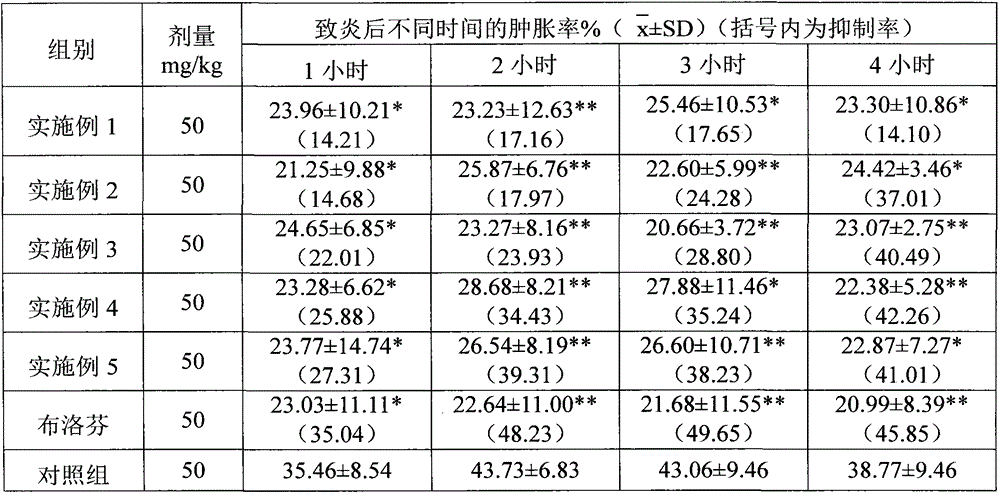A kind of mycorrhized dendrobium seedling tea tree imitation wild cultivation method
A technology imitating wild cultivation and cultivation methods, applied in the field of mycorrhizal Dendrobium seedlings and tea trees imitating wild cultivation, can solve the problems of insufficient medicinal value, etc.
- Summary
- Abstract
- Description
- Claims
- Application Information
AI Technical Summary
Problems solved by technology
Method used
Image
Examples
Embodiment 1
[0047] Step 1: Fermentation of mycorrhizal fungi
[0048] A. Select the fresh vegetative roots of wild dendrobium, wash off the humus and sundries on the root surface with running water; immerse the root segment in 1% calcium hypochlorite solution for 3 minutes on the ultra-clean workbench to sterilize the surface, and then rinse with sterile water Rinse 3-5 times; cut the root section into 0.5-3mm long pieces, place it on the separation medium, and cultivate it in the dark at 27°C. After culturing and purifying on the substrate, transfer it to solid fermentation medium, culture at a constant temperature of 5°C for 40 days, and punch holes at the edge of the colony to form bacterial flakes, which can be used directly;
[0049] The separation medium is: glucose 20g / L, peptone 8g / L, streptomycin 0.5g / L, ground moss dentata 25g / L, casein hydrolyzate 3g / L, agar 19g / L, pH 4;
[0050] The fermentation medium is: 120g / L potato, 180g / L glucose, 100g / L moss moss grinding, 8g / L pepton...
Embodiment 2
[0071] Step 1: Fermentation of mycorrhizal fungi
[0072] A. Select the fresh vegetative root of wild dendrobium, wash off the humus and sundries on the root surface with running water; immerse the root section in 1% calcium hypochlorite solution on the ultra-clean workbench for 7 minutes to sterilize the surface, and then wash it with sterile water Rinse 3-5 times; cut the root section into 0.5-3mm long pieces, place it on the separation medium, and cultivate it in the dark at 26°C. After culture and purification on the substrate, transfer to solid fermentation medium, and after 40 days of constant temperature cultivation at 8°C, punch holes on the edge of the colony to form bacterial flakes, which are further inserted into liquid fermentation medium as mycorrhizal fungus seed strains for amplified cultivation;
[0073] The separation medium is as follows: glucose 15g / L, peptone 13g / L, streptomycin 0.3g / L, ground moss dentata 10g / L, casein hydrolyzate 3g / L, agar 23g / L, pH 4....
Embodiment 3
[0095] Step 1: Fermentation of mycorrhizal fungi
[0096] A. Select the fresh vegetative root of wild dendrobium, wash off the humus and sundries on the root surface with running water; immerse the root segment in 1% calcium hypochlorite solution for 1-10min on the ultra-clean workbench to sterilize the surface, and then use sterile Rinse with bacterial water 3-5 times; cut the root section into 0.5-3mm long pieces, place them on the separation medium, and cultivate them in the dark at 20-30°C. After the mycelium grows into bacteria from the root section, pick the bacteria After the silk is cultured and purified on the separation medium, it is transferred to the solid fermentation medium, and after 30 days of constant temperature cultivation at 23°C, holes are punched at the edge of the colony to form bacterial flakes, which are further inserted into the liquid as mycorrhizal fungus seed strains;
[0097] The separation medium is: glucose 8g / L, peptone 4g / L, streptomycin 0.02g...
PUM
 Login to View More
Login to View More Abstract
Description
Claims
Application Information
 Login to View More
Login to View More - R&D
- Intellectual Property
- Life Sciences
- Materials
- Tech Scout
- Unparalleled Data Quality
- Higher Quality Content
- 60% Fewer Hallucinations
Browse by: Latest US Patents, China's latest patents, Technical Efficacy Thesaurus, Application Domain, Technology Topic, Popular Technical Reports.
© 2025 PatSnap. All rights reserved.Legal|Privacy policy|Modern Slavery Act Transparency Statement|Sitemap|About US| Contact US: help@patsnap.com

